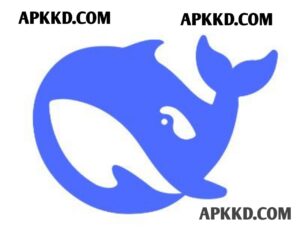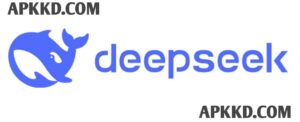Introduction
A Chinese startup called DeepSeek AI is a major force in the quickly developing field of artificial intelligence (AI). By democratising access to potent AI tools, DeepSeek AI pushes the limits of what is feasible in the field, in contrast to traditional businesses that concentrate on proprietary technology.
A sophisticated, huge language model called DeepSeek-R1 has had a big influence on global market dynamics, upending AI behemoths like OpenAI, Google, and Meta, underscoring China’s increasing AI supremacy, and posing issues with international competitiveness, ethics, and the future of AI innovation.
This article explores the origins, development, worldwide influence, and potential.
The Origins of DeepSeek AI: A Visionary’s Dream
1.1 The Man Behind DeepSeek AI
Liang Wenfeng, a former hedge fund manager, established DeepSeek AI because of his early interest in mathematics, especially advanced calculus, which he mastered by middle school and which helped him launch his career.
Liang, a graduate of Zhejiang University, is one of the co-founders of the $8 billion hedge fund High-Flyer Quant. His love of AI inspired him to create DeepSeek AI in 2023 with the goal of developing cutting-edge AI models to counter Western hegemony.
1.2 The AI Ambition: A Strategic Move
An important step that encourages innovation and expansion in the AI sector is DeepSeek AI’s adoption of an open-source ethos, which enables developers globally to refine and improve its models.
Despite limits on Western technology and chip exports, China’s success in DeepSeek AI shows that it can innovate on its own and compete worldwide in AI development.

Technological Breakthroughs: The Power of DeepSeek-R1
2.1 The Launch of DeepSeek-R1
The groundbreaking LLM DeepSeek-R1 from it can be taught for less money than rivals like OpenAI’s GPT-4.
It shows that AI developments don’t only depend on costly processing resources by employing cost-effective hardware and software techniques for excellent accuracy, even with a smaller training budget.
2.2 Why DeepSeek-R1 Stands Out
DeepSeek AI’s model provides a number of advantages.
- Open-Source Nature: Unlike GPT-4 and Gemini, DeepSeek-R1 is completely open-source software, allowing developers to incorporate and improve it.
- Efficiency: Optimised GPU use is used to train DeepSeek-R1, which lowers expenses without sacrificing performance.
- Multilingual Capabilities: Because the model is available in numerous languages, it may be used in different geographical locations.
By establishing a more open and transparent framework for AI development, the method has completely transformed the AI sector.
Disrupting the Global AI Market
3.1 The Market Shake-Up
Major tech companies, including Nvidia, Tesla, Google, Amazon, and Microsoft, have suffered large financial losses as a result of DeepSeek AI’s rise since investors have reevaluated the competitive environment since its release.
Its rapid growth is forcing Western AI leaders to reassess their commercial strategies.
3.2 Competing with OpenAI and Google
Due to its affordability and ease of use, DeepSeek AI competes with OpenAI’s GPT-4, Google’s Gemini, and Meta’s Llama models.
DeepSeek-R1 replaces GPT-4’s proprietary API, drawing in open-source developers and challenging the supremacy of large AI companies, necessitating a reevaluation of existing tactics.

Ethical Concerns and Security Risks
4.1 Data Privacy Concerns
DeepSeek AI, operating in China under strict government regulations, is facing concerns over data security and user privacy, leading to speculation about its AI models’ potential use.
- Censorship enforcement
- Surveillance applications
- Government-driven misinformation
4.2 The Risk of Misinformation
Open-source AI models raise ethical questions because of the possibility that bad actors may abuse them to create deepfakes, disseminate false information, or automate damaging material.
Concerns about the global digital ecosystem have been raised by the discussions around the governance of AI models and the possible security threats posed by open-source AI.
Global Adoption and Future Prospects
5.1 International Reception
Despite early reservations, it has become very popular worldwide and is now the most popular AI app in the US and UK on the Apple App Store, demonstrating the high demand for its capabilities abroad.
The CEO of Microsoft and co-founder of a16z, Marc Andreessen, has commended its effectiveness and promise.
5.2 What’s Next for DeepSeek AI?
The following are some of DeepSeek AI’s ambitious future plans:
- The corporation wants to compete with upcoming AI models and improve its AI skills.
- The goal is to develop more sophisticated and economical models for business applications.
- The objective is to dominate the global AI business by improving multilingual support.
The future of DeepSeek AI has the potential to completely transform how AI models are created and made available, facilitating more equitable and general access to cutting-edge AI technology.

Conclusion
DeepSeek AI revolutionises the AI industry by making powerful models open-source, introducing a new wave of innovation that challenges traditional companies.
It has dramatically altered the AI business, shifting the fight between closed-source and open-source technologies, and its continuing supremacy in the AI arena remains doubtful.
FAQs
1. What is DeepSeek AI?
A Chinese AI startup called DeepSeek AI is concentrating on creating open-source huge language models in order to take on industry titans like OpenAI, Google, and Meta.
2. How does DeepSeek AI compare to OpenAI’s GPT-4?
Although it performs similarly to GPT-4, DeepSeek AI’s DeepSeek-R1 model is more affordable and open-source.
3. Why is DeepSeek AI considered a market disruptor?
Tech companies have had to reevaluate their AI plans as a result of DeepSeek AI’s success, which has caused them to suffer large financial losses.
4. What are the security concerns surrounding
Because the system is open-source, critics raise issues with data privacy, government control, and the potential for disinformation.
5. What’s next for DeepSeek AI?
It intends to publish cutting-edge models, grow internationally, and keep questioning accepted practices in the AI sector.





